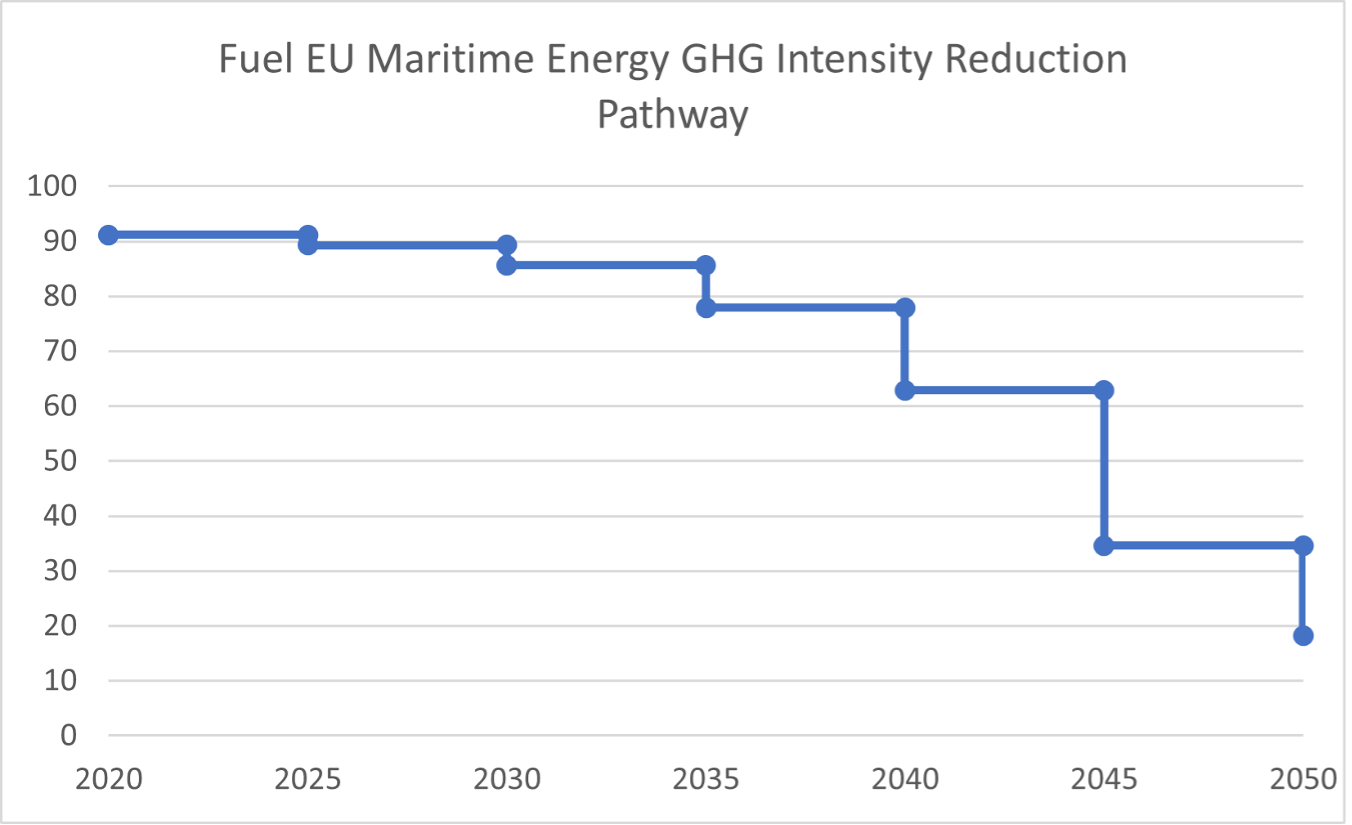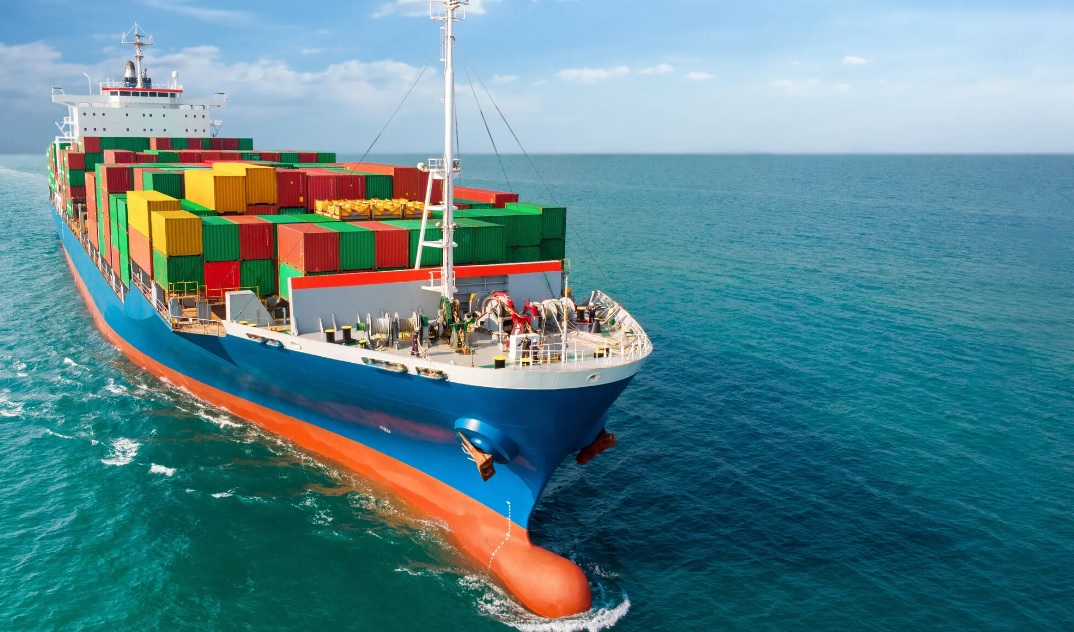
(www.MaritimeCyprus.com) In less than a year, FuelEU Maritime enters into force, meaning that vessels in the EU will have to operate using less carbon-intensive energy sources. Non-compliance can result in significant penalties.
Shipping, and in particular shipowners, may feel that the past couple of years have been overwhelming in terms of adapting to new decarbonisation regulations. 2023 saw the introduction of the Energy Efficiency eXisting ship Index (EEXI) and the Carbon Intensity Index (CII). 2024 has seen the extension of the EU Emissions Trading System (EU ETS) to shipping. And 2025 will see the start of FuelEU Maritime.
FuelEU Maritime is the second element within the EU’s Fit for 55 Package directed at shipping. Its purpose is to reduce the greenhouse gas (GHG) intensity of energy used by ships, encourage use of shore-side electricity, and drive the take-up of Renewable Fuels of Non-Biological Origin (RFNBOs) such as e-ammonia and e-methanol.
Progressive reduction
The vessel’s GHG intensity is measured in grams of CO2 equivalent per MJ of energy, expressed as CO2e/MJ. The unit of CO2e is used because it covers methane and nitrous oxide, as well as CO2 itself. Since January 2024, all these GHGs have had to be reported under the EU’s Monitoring Reporting Verification (MRV) system.
The baseline GHG intensity is 91.16gCO2e/MJ. This is the average GHG intensity of the energy used by vessels in 2020, as reported under the EU MRV system. This figure largely reflects the GHG intensity of HFO and MDO, which accounted for the vast majority of energy used by vessels in 2020. From 2025 vessels must operate using less GHG intense energy sources. The initial required reduction is 2% in 2025, equating to a GHG intensity 89.34 gCO2e/MJ. From 2030 this rises to a 6% reduction (85.69gCO2e/MJ), subsequently increasing every five years and reaching an 80% reduction (18.23gCO2e/MJ) in 2050, as compared to the 2020 baseline.
If the initial GHG intensity of the energy used by a vessel is higher than the 2020 baseline, the subsequent percentage reductions will be correspondingly larger to meet the required GHG intensity levels.

The GHG intensity (also known as the ‘emission factor’) of the various fuel types is calculated on a well-to-wake (WTW) basis. This means that all GHG emissions associated with the production, delivery and combustion of the fuel are taken into account. Each type of fuel has a designated GHG intensity, which will vary considerably depending on how the fuel has been produced (e.g. grey ammonia vs. blue/green ammonia). Another important point to note is that biofuels produced using food and feed crops have the same emission factor as fossil fuels, because they are deemed to be environmentally unfavourable.
Scope and timetable
Similar to the EU ETS, FuelEU Maritime applies to commercial vessels of 5,000GT and above that transport goods or passengers. Intra-European voyages will count 100%, whereas voyages to/from ports of call in Europe will count 50%. There are exceptions, such as some passenger ferry voyages. Currently, the EU Commission’s position is that responsibility for compliance will fall on the entity responsible for the vessel’s ISM obligations, which differs from the EU ETS where it can be either the shipowner or any other organization that has agreed to be responsible for the ISM obligations.
Recording of the relevant data commences from 1 January 2025. Reporting of the data takes place in the following calendar year: by 31 March the company’s verifier must upload the data to the FuelEU Database; on 1 May the company must pay any compliance penalty; and the verifier issues the FuelEU Document of Compliance by 30 June.
Most pressingly, shipowners must submit a reporting plan to their nominated verifier by 31 August 2024. This must include how they intend to monitor and report the amount, type and emission factor of energy used onboard.
Solutions for compliance
How can shipping companies comply with FuelEU Maritime? In the long term, it will primarily be through the use of RFNBOs. To further incentivize this take-up, the energy used from RFNBOs will count twice for the vessel’s calculated attained GHG intensity. But in the near term the availability of RFNBOs and the number of ships capable of burning them is limited, and so other methods will be needed:
The most likely solution is biofuels, which can be blended with conventional fuels to sufficiently reduce GHG intensity, but only if the biofuel is produced using non-food or feed crop. The bunker supplier will be required to provide a Sustainability Annex to the Bunker Delivery Note (BDN), providing the fuel carbon intensities and the required date for calculation of fuel emissions for the FuelEU obligations.
Another solution that is gaining momentum is wind-assisted propulsion systems (WAPS). If fitted or retrofitted, the shipping company is entitled to a ‘Wind Reward Factor’, which is applied to reduce the overall GHG intensity of the energy used. No other energy efficiency technologies such as heat-recovery systems or air lubrication receive a similar reward factor.
Shipowners will also be able to use onshore power supply (OPS) at berth, which is treated as zero-rated GHG intensity. It will be voluntary at first, but from 2030 passenger vessels and cruise ships will have to use OPS where it is available and face financial penalties for not doing so. Of course, the availability of OPS and ability of ships to use it means that this is likely to have limited take-up in the near term.
As yet, there is no reduction of GHG intensity for Onboard Carbon Capture (OCC), but this will likely be reconsidered in 2027 when the legislation is due for review.
Significant penalties for non-compliance
Unlike the IMO’s CII, non-compliance with the FuelEU Maritime will result in potentially significant financial penalties. These are calculated using a rate of €2,400 per equivalent metric ton of VLSFO for the energy consumed which is in excess of the mandated GHG intensity. Illustrations by the EU Commission for a containership burning conventional fuel (12,000 HFO and 1,000 MDO) but using OPS, show annual penalties of €1.1 million from 2030 (by when a 6% GHG intensity reduction is mandated) if the ship were to trade in Intra-EU/EEA waters with no steps taken to switch to qualifying biofuel, RFNBOs or to retrofit WAPS.
Stacked against these potential financial penalties for non-compliance are the higher prices of biofuel and RFNBOs. The cost of EU ETS allowances, which increased to around €100 in early 2023 but are now trading below €60, will also need to be factored in when considering what, if any, capital investments to make.
Pooling and Banking
Unlike the CII, the attained GHG intensity can be ‘pooled’ amongst ships and ‘banked’ as credits for future years. These options have been included to encourage shipping companies to invest in new alternative fuel powered vessels. For example, a shipowner could in the future purchase an ammonia-powered vessel, which would have a far lower attained GHG intensity than the mandated level (assuming e-ammonia is used). If that vessel is pooled with other vessels within the shipowner’s fleet which are still running on conventional fuels, the mandated GHG intensity could be achieved on a fleet-wide level.
The ability to pool is not limited to single fleets: if a shipowner has surplus compliance after pooling within its own fleet, it can sell that surplus to other shipowners through the pooling system.
Alternatively, the shipowner can ‘bank’ the surplus ‘credits’ and use them in subsequent years as the mandated GHG intensity reduces further. As such, as with the ability to develop additional revenue streams by trading allowances under the EU ETS, the FuelEU Maritime regime offers potential commercial opportunities for shipowners.
Getting prepared
What can shipowners do to prepare for the introduction of FuelEU Maritime? Aside from the 31 August 2024 deadline for the submission of a FuelEU Monitoring Plan, shipowners and charterers would be well-advised to ensure that their charterparties contain the necessary provisions to enable future compliance with the mandated GHG intensity reductions. These reductions cannot be achieved by revised operational practices, such as slow steaming, but instead require the use of lower GHG intensity conventional fuels, qualifying biofuels, RFNBOs, or the retrofitting of WAPS equipment. This will require consultation with classification societies for advice on the appropriate steps to take to ensure compliance.
Generally, standard form time charterparties do not entitle a shipowner to mandate that the charterer bunkers qualifying biofuel or RFNBOs; any retrofitting of equipment will result in off-hire and additional capital cost to the shipowner without any commensurate increase in hire or other revenue for reduced consumption. Steps are being taken to resolve this. There is a BIMCO Sub-Committee developing FuelEU Maritime and Biofuels Clauses, on which Gard has a representative. Owners and charterers will doubtless also develop their own bespoke clauses. We will continue to monitor developments and clarifications of the regulations, the industry response to them, and provide further updates.
As with the CII and the EU ETS, charterers may be reluctant to agree to terms in new charterparties or amendments to existing ones to share the financial cost that FuelEU will entail. But in this rapidly decarbonising world, longer-term collaboration is likely to pay dividends.
Source: Eleni Antoniadou and Neil Henderson













